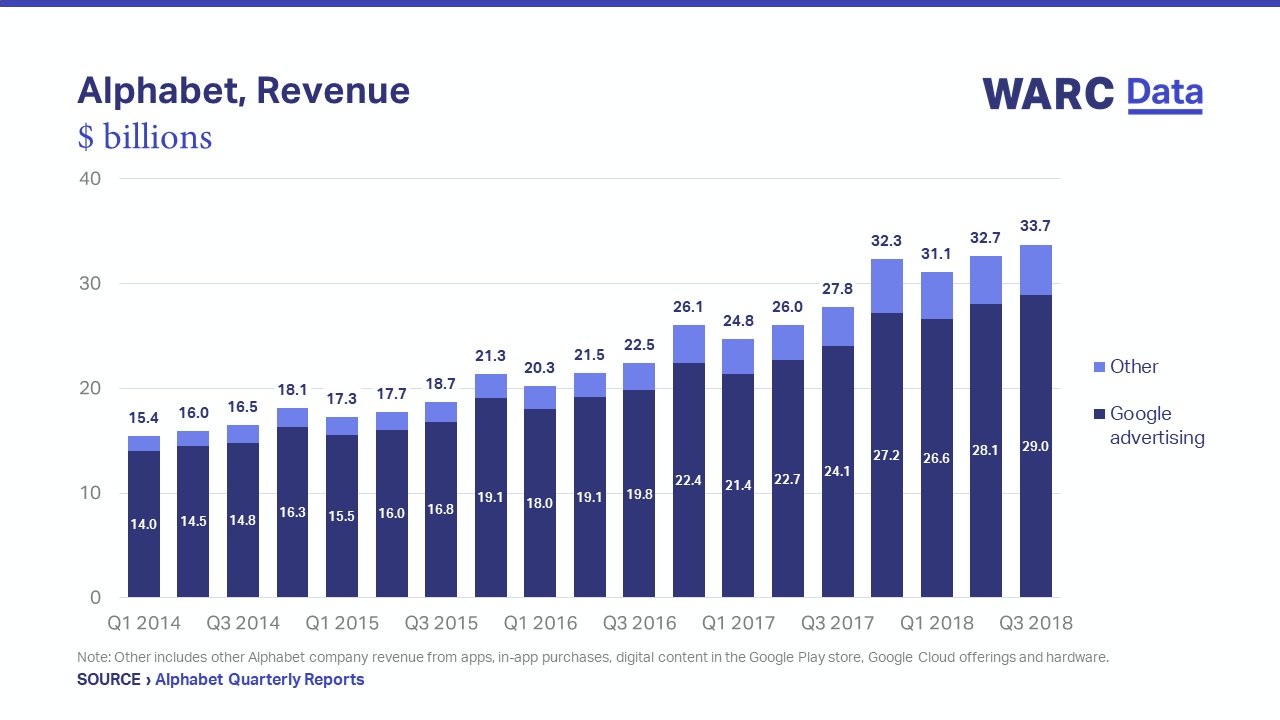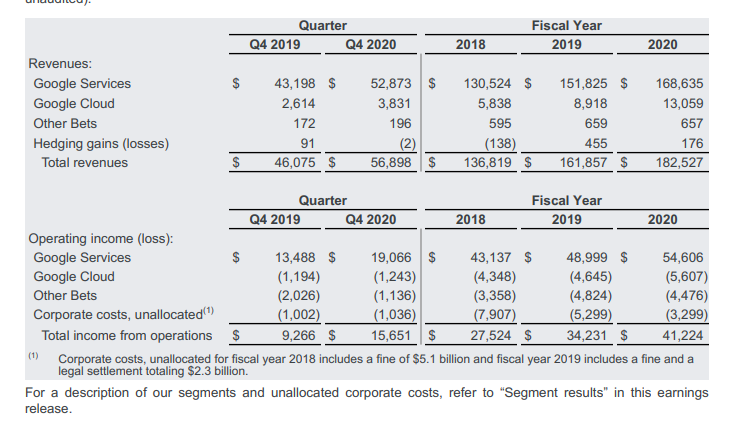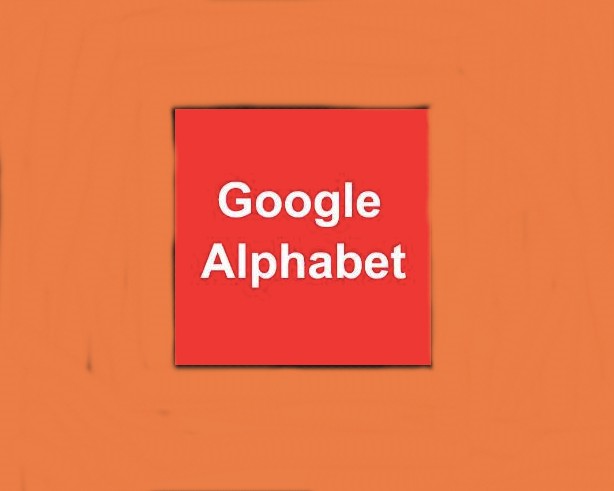Alphabet, the parent company of Google, now accounts for just under one-half (48.1%) of global online advertising spend, according to WARC Data analysis of the company’s latest reports.
Mountainview-headquartered American tech giant saw advertising revenue across its platforms increase by $12.1 billion (+9%) in 2020, capturing a larger share of a wider ad market that struggled.
In comparison, global online advertising investment remained largely flat by historic standards, and offline spend fell by an estimated 19.7% last year. WARC report finds that Alphabet is the clear leader in driving online advertising revenue and this is primarily driven by its the strategy laid by the leadership of team Google.
Expressing happiness over the company’s performance, CEO of Google and Alphabet Sundar Pichai said the companies strong results this quarter reflect the helpfulness of its products and services to people and businesses, as well as the accelerating transition to online services and the cloud.
“Google succeeds when we help our customers and partners succeed, and we see significant opportunities to forge meaningful partnerships as businesses increasingly look to a digital future,” said Sundar Pichai while commenting on the company performance during the quarter and fiscal year ended December 31, 2020.
However, one can’t gauge, on how much revenue a company gets after its investment into advertisement in this medium. It is also true that Alphabet collects various information from the users, when they click into any advertisements like users habit, buying behaviour, buying patterns and the AI collects various information on real-time usage.
The company adds that retail was the largest contributor to year-on-year growth in advertising, with tech, media and entertainment, and CPG also being high spenders. Advertising revenue from Google Search (excluding traffic acquisition costs) topped $100 billion for the first time, helping it take a one-third (34.1%) share.

The Google search and Youtube platform owned company’s expansion of advertising comes even after experiencing its first quarterly decline between April and June. YouTube saw by far the quickest growth in advertising revenue, up by almost one-third (30.5%) year-on-year to reach $19.8 billion in 2020. This means the video platform takes a 6.5% share of all online advertising spend.
Direct response advertising on YouTube showed substantial growth throughout the year – 60% of customers using TrueView for action (video ads with a prominent call-to-action) are new to YouTube. In comparison, brand spending struggled in the first half of the year but began to recover in the third quarter. The company says it now reaches more 18- to 49-year-olds than all linear TV networks combined. Connected TVs are also the platform’s fastest-growing screen – over 100 million people in the US watch YouTube on their TV each month.
Additional data show that TV now accounts for over a quarter of YouTube viewing, with many audiences not seeing any difference between YouTube and traditional TV. However, the level of attention afforded to YouTube ads is lower than traditional TV ads, but still higher than Facebook or Instagram video. WARC’s own research of over 1,000 marketers finds that YouTube and Google Search are the two most in-demand online platforms in 2021 – over half of those surveyed plan to invest more.
The company called out two trends for YouTube as areas of growth: live video and short-form video. More than half a million channels ran livestreams for the first time in 2020, while videos in the new Shorts player receive 3.5 billion daily views. As well as this, shoppable video will be a major theme for 2021.






